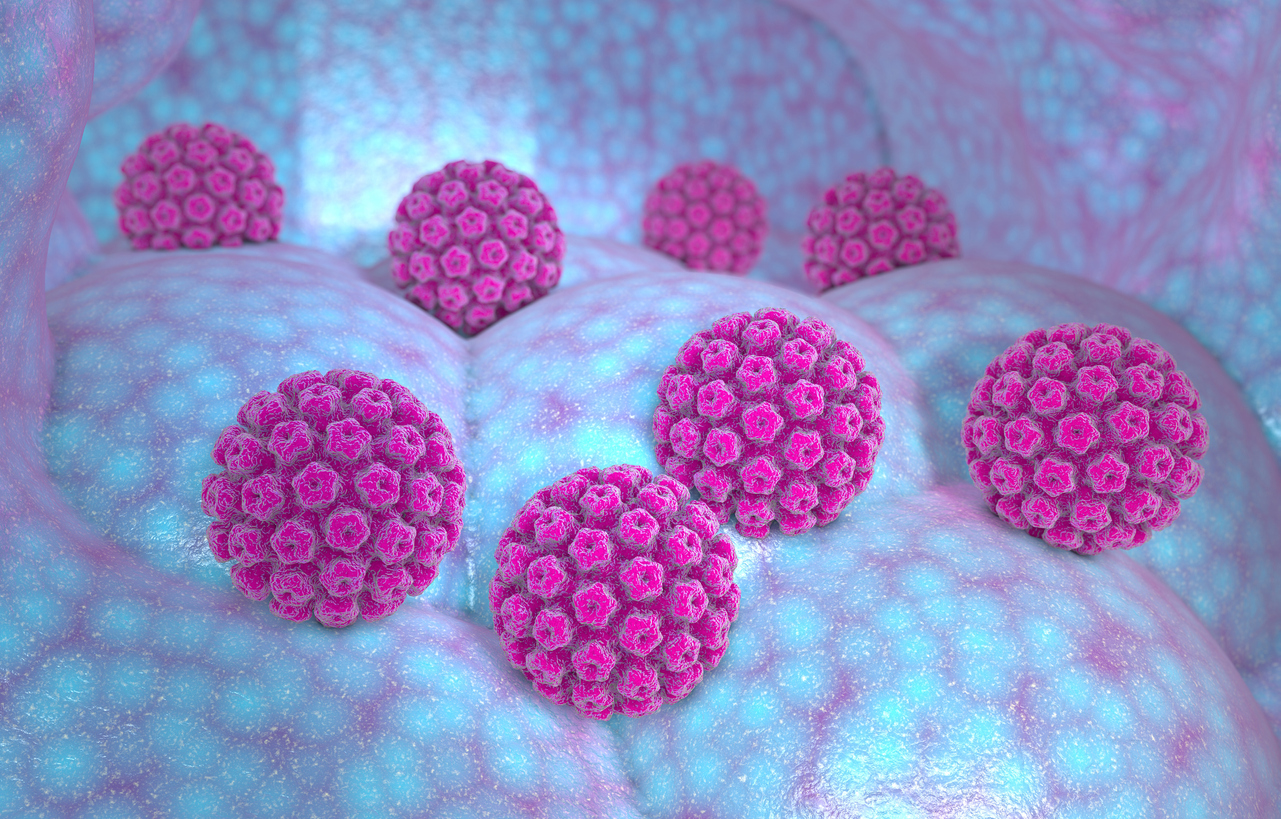
Human Papillomavirus (HPV)
What is human papillomavirus?
Human papillomavirus (HPV) infection is the most common sexually transmitted disease worldwide.
The vast majority of sexually active adults will be exposed to this virus at some time in their lives, affecting about 80% of sexually active people.
There are several subtypes of HPV. The vast majority of viruses do not produce any visible lesions, some produce cauliflower-shaped warts (papillomas) and others can produce pre-cancerous lesions or tumors; the most common in our environment are cervical lesions in women, which if not properly controlled can lead to cancerous pathology.
How does it spread?
It is transmitted by direct skin and mucosal contact. The most frequent form of transmission is contact during sexual intercourse, whether vaginal, anal or oral. Therefore, it is not only a pathology of the genitals, but can affect the mouth, pharynx, anus, and any region of the body with which it comes into contact. This means that we can also find this virus in the throat of our patients.
It can also be transmitted through contact with saliva or blood, although this is much less common.
More than 80% of the population has been in contact with this virus and do not have warts but may have infected others at some point.
It can take years or decades from the time we are infected to the time we develop warts or lesions on the woman's neck.
Is human papillomavirus a health problem?
In the vast majority of cases it will not cause any problem since it will not manifest any symptoms.
If genital warts appear, it is a cosmetic problem and the possibility of infecting partners or sexual contacts.
The appearance of genital warts in a patient does not mean that the person is more affected than the rest of the population, but rather that the patient is infected by one of the subtypes of virus that generate warts (6 and 11) or has a greater predisposition to manifest these lesions.
Can Human Papillomavirus cause cancer?
HPV can cause certain types of cancer, such as cervical cancer, vulvar cancer, vaginal cancer, anal cancer and throat cancer, among others. The highest percentage of these corresponds to cervical cancer, which is why women should have an annual check-up with their gynecologist and it is in this check-up where lesions that could be precursors of a tumor can be detected. It is very important to have these check-ups because if these lesions are treated before a tumor appears in the cervix, the prognosis is much more favorable.
Although HPV can also affect men, they are much less likely to develop penile cancer. This is extremely rare in Spain, Europe or the U.S. It is more common in Central and South America, and regions of Asia and Africa.
It is for this reason that the acquisition of the human papillomavirus in men does not usually have serious consequences; rather than a health problem in men, it is an aesthetic or relationship problem when warts appear.
Tumor history: Is it possible to know who is infecting whom?
From the time a person is exposed until a wart or lesion with the virus is visualized, several years, even decades, may pass. Therefore, tracing the source of infection is virtually impossible in the office.
Can human papillomavirus infection be prevented?
Human papillomavirus (HPV) can be prevented through vaccination, condom use and safe sex practices. HPV vaccination is safe and effective in preventing HPV infections as well as reducing premalignant lesions. Condoms can help reduce the risk of HPV transmission by reducing penile contact with another person's skin or mucosa at penetration.
In addition, the use of safe sexual practices such as sex with only one partner who is not infected, something that is very difficult since we live in a society in which more and more people have more sexual partners and at younger ages.
Currently there is a vaccine that contains 9 different subtypes of the virus, many of these strains are the ones that produce cancer and others that produce warts.
How long does it take from the time we are in contact with the virus until lesions such as warts or changes in the cervix appear?
The time it takes from the time a person is exposed to the human papillomavirus until he or she develops lesions such as warts or changes in the cervix varies. In some cases, it can take up to 10 years for the virus to develop visible lesions. However, this depends on several factors, such as the person's immune system, age, health status and exposure to the virus.
This happens because once the virus comes into contact with a patient's body, it has to enter the cell, create a mechanism within the cell to replicate and multiply and it is a process that, as I mentioned before, takes a long time and can be "controlled" by the immune system. Therefore, it is practically impossible to know who has infected whom within a couple. It is also impractical, since the key to improving women's health is prevention by going to the gynecologist every year and in the event that warts appear, burn them.
Are vaccines effective and who should be vaccinated?
In the United States and Europe, human papillomavirus (HPV) vaccination recommendations vary by age and sex. Females and males aged 9-26 years should receive two doses of the vaccine, with a booster dose 6-12 months after the first dose.
It is recommended to vaccinate boys and girls over 12 years of age to make sure they have not started sexual intercourse yet. Two doses should be given 6 months apart. If vaccinated after 15 years of age, 3 doses should be given.
Older adults without risk factors are not currently indicated for vaccination in Spain.
Patients with risk factors (whether male or female) are indicated for vaccination, such as those with HIV/AIDS or other severe immunodeficiencies, men who have sex with men (up to age 26), prostitutes (up to age 26), and women who have had cervical surgery (any age).
Does it make sense to study or detect human papillomavirus?
World reference centers such as the American Center for Disease Control and Prevention (CDC) recommend papillomavirus no recommends the detection of papillomavirus in men. This is due to the fact that it is very frequent in this population, practically the majority of them suffer from it, besides the fact that the active detection of subclinical (not visible) lesions does not represent a health problem.
The FDA (Food and Drug Administration) has not approved any HPV tests for men, nor any tests to detect the virus in areas other than the cervix. In addition, the ability of these tests to detect the different serotypes that cause malignant disease in men is limited.
Therefore, it is not cost-effective to spend time and resources on it, and it often generates problems for the patient or the partners to study something that is not going to generate any change in this disease or improve the prognosis.
What should be done, in a practical way, to live with this disease if we cannot eradicate it today?
We tell our patients to be practical and realistic. The advice we always give is as follows:
- Vaccinate boys and girls before initiating sexual relations (10-12 years).
- Women should visit their gynecologist once a year for a study of the cervix to detect preneoplastic lesions, which are curable. If warts appear, they must be treated, there are very simple methods to do so. In our center, we do it the same day of the consultation if patients wish by means of cryoablation with heat. It is a painless process since local anesthesia is used.
Our specialists
Take care of your gynecological health! Don't wait any longer to schedule your appointment with our Gynecology experts.






